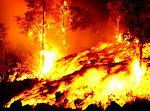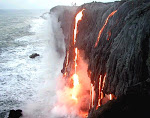
I believe there should be increased research for stemming the potentially hazardous affects of volcanoes. For example, an Indonesian Monogentic Field volcano erupted a year or so ago, swamping hundreds of square kilometres of farming land with mudflows along rivers. In order to stop the continuous flow of lava, the Indonesian authorities dropped giant concrete balls down the volcanic vents (not sure how it worked). Some may call volcanoes, "mother nature", but there are many locations around the world where large populations are situated near an active volanco. Thus, I believe it is essential for enhanced study in preventing the devastation a volcano typically does.










